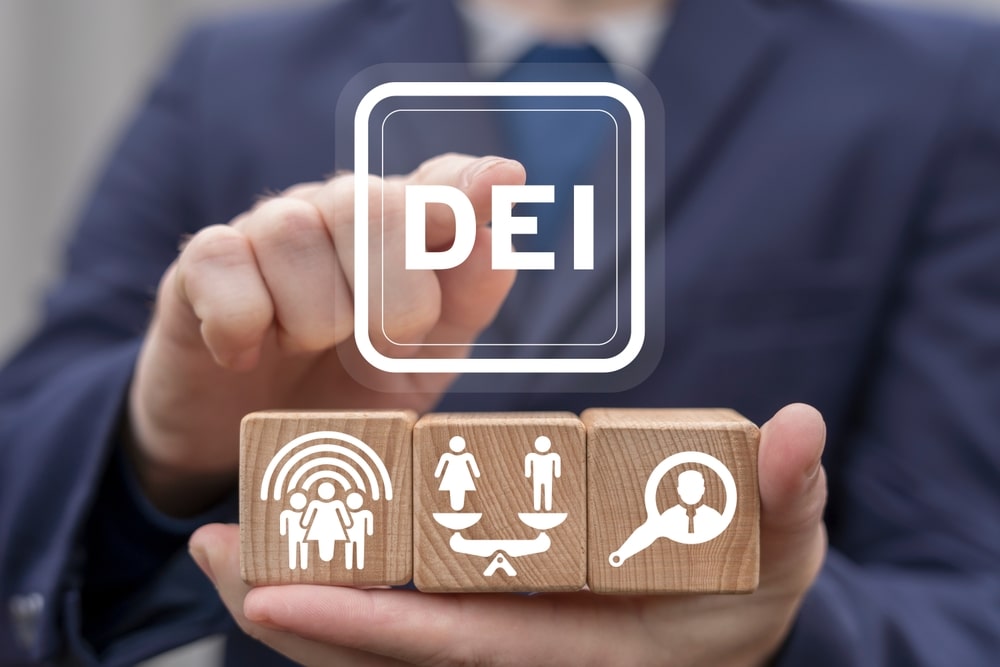
6 Most-Popular Blog Posts of 2025
Ethics and Compliance


What Is Diversity, Equity, and Inclusion (DE&I Training)? To understand diversity, equity, and inclusion (DEI) training we first need to start with the basics: what exactly is diversity, equity, and inclusion? Diversity, put simply, is the way individuals in a group differ. Diversity is closely related to an individual’s identity and life experiences; these things […]

To understand diversity, equity, and inclusion (DEI) training we first need to start with the basics: what exactly is diversity, equity, and inclusion?
Diversity, put simply, is the way individuals in a group differ. Diversity is closely related to an individual’s identity and life experiences; these things greatly shape how we move through the world and, more specifically, the workplace. The ways in which we can be diverse are directly related to the many different aspects of one’s identity including one’s race, gender, sexuality, nationality, spiritual beliefs, and disability status. Diversity training covers how to be more conscious of these different life experiences and how to combat unconscious biases we may hold.
Equity, not to be confused with equality, is shaped by how our organizations treat diversity. Equity is the recognition that our identities affect what institutional opportunities we have access to and seeks to correct barriers that some marginalized people may face. Whereas equality simply means equal resources for all, equity recognizes that we all start from different points, meaning that to truly balance the playing field we need to commit more resources to undoing systemic barriers and social inequities.
Inclusion refers to a sense of belonging within an organization. This means creating an environment that openly welcomes differences in identity and works to make the workplace something akin to a safe space for diverse employees. Inclusion efforts work to create a workplace where people from marginalized groups feel comfortable being themselves and are given the opportunity to fully participate.
Diversity, equity, and inclusion initiatives refer to policies, procedures, and programs an organization may adopt in order to promote these ideals within their workplace. These may include things like DEI training, setting diversity goals, and creating programs to help foster an inclusive work environment.
Diversity, equity, and inclusion training helps us to promote the ideals of diversity, equity, and inclusion in our workplaces. DEI initiatives help give us a better understanding of where our coworkers are coming from, and helps us create a respectful and inclusive workspace.
Diversity, equity, and inclusion training covers a few specific areas, including: anti-harrasment and discrimination training, unconscious bias training, and training on specific diversity and inclusion topics. Some of these topics include: using neutral language, microaggressions and implicit biases. The goal of these trainings is to build awareness about how unconscious bias may affect workplaces, how to combat those biases, and ultimately how to build allyship.
In addition to the human case for DEI efforts, there is also a business case for diversity, equity, and inclusion efforts. Having an organization with diverse employees at every level helps strengthen the entire organization and makes it an open, safe space for new ideas and innovation. Effective DEI initiatives are necessary to foster that type of diverse workforce. Research shows that companies that don’t have proper DEI initiatives and don’t work to foster diverse and inclusive work environments end up having employees who are more likely to be disengaged and more likely to say they’re considering leaving their jobs within a year. Ultimately, an inclusive and diverse work environment makes for a better employee experience and reduces turnover. And a better employee experience means you retain employees longer and your organization is stronger for it.
Effective DEI training should go beyond the basics of diversity and inclusion. In order to be effective – diversity, equity, and inclusion training should take a multi-pronged approach that teaches not only the basics of diversity and inclusion, but also how to create diversity, foster inclusion, and how to combat threats to equity within the workplace. Specific DEI topics, like microaggressions and using inclusive language, provide employees practical and actionable guidance that they can put into use in their workplace.
In addition, to create an equitable work environment you need to teach about unconscious biases. Sometimes basic DEI training can seem obvious. People rarely set out to purposefully discriminate against their colleagues. But unconscious, implicit bias—or biases that we might not even be aware we have—are a major threat to creating inclusive, diverse workplaces. Effective training will teach staff what unconscious biases are, how to recognize those biases in themselves, and how to combat their effect on the workplace.
In order to properly conduct diversity training, you’ll need to broach the subject of allyship. One important step to creating an inclusive, welcoming work environment is fostering respectful relationships. Effective diversity training will teach your staff how to become an ally and work to reduce the impact of bias within the workplace. This may include training staff on bystander intervention, microaggressions, and how to avoid labels and automatic assumptions.
Don’t forget management, either: Management is key to an inclusive workplace. These are your people leaders. What they do has the most direct impact on your employees’ morale and, if they’re involved in the hiring process, they directly influence the actual make up of your staff. Training should stress the importance of combating unconscious bias in the hiring process, performance reviews, evaluations, and promotions. Many organizations don’t realize that they may even be violating the law in the hiring process. Providing effective training to your managers can help alleviate this legal risk.
Foster conversation – Fostering conversation is crucial for DEI efforts. The goal of these trainings is to help employees realize their biases and arm them with the tools they need to combat them. Fostering open conversation with your staff will help you really tap in and learn what specific areas your organization can focus DEI efforts on.
Don’t shame your employees – DEI training should be particularly mindful to not imply that anyone is intentionally biased. There’s a reason we call them unconscious biases—we’re often not aware of them and their impact on our workplaces. Raising awareness of these biases is the first step to combating them. DEI training should be a positive, productive experience where employees learn what they can do to help build a more inclusive work environment, and shame is not an effective tool for that.
Give your team practical tools – One especially effective step in inclusion training is giving employees across all levels of your organization the tools to create more diverse and inclusive work environments. This can include instituting mentorship programs, training employees on how meetings should be run so that all ideas can be heard, teaching employees how to intervene when they witness biases, and instructing employees on ways to prevent microaggressions and automatic assumptions.
While they are also the ones receiving the training, your team—including management—are a hugely crucial resource when it comes to inclusion and diversity training. Your staff is directly impacted by the employee experience in your company. This means they likely have important insight into how the company’s culture impacts DEI efforts. You may not even realize it but you also have influential people leaders within your staff that will be able, once armed with the correct tools, help lead their colleagues in creating a more inclusive culture and equitable work environment. This is why it’s important to center your staff and acknowledge their experiences in DEI training.
In terms of resources, expert help is always imperative. It’s wise to seek the advice of outside experts not only for training but also for consulting on DEI initiatives. For example, Traliant offers expert training and consulting from professors and employment lawyers who’ve dedicated their careers to advocating for diverse workforces. Because of this extensive experience, our experts can help consult with your organization to figure out what DEI efforts will work best for you. We can help you pinpoint what areas you need to focus on in your company culture to make a diverse, equitable, and inclusive work environment. Your organization can’t afford to make mistakes when it comes to this, so it’s always best to call in the experts.
Traliant offers a holistic and effective unconscious bias and DEI training program. This program covers not only the basics of diversity, equity, and inclusion, but also covers how unconscious biases affect workplaces. In addition, Traliant provides training on DEI topics like microaggressions and using neutral language. Compared to other DEI initiatives, Traliant takes a practical approach to diversity, equity, and inclusion training. We want to give you the tools you need to start creating a more inclusive, equitable, and diverse workplace. This means we focus on giving you guidance that you can implement immediately to promote diversity within your workplace. Our DEI training course is offered both online in a self-paced format and/or live with expert instructors.
Traliant has been trusted by many organizations to train their staff on the importance of diversity, equity, and inclusion. You can learn more abut Traliant’s complete DEI course here.
An example of diversity training could be a workshop or seminar that aims to educate participants about different cultures, races, religions, and other aspects of diversity. It may involve activities like case studies, interactive exercises, and group discussions to promote understanding and acceptance of diverse perspectives. Another example could be an online course that provides modules on various topics like biases, inclusivity, and effective communication across cultures.
There is both a human case and business case for diversity, equity, and inclusion. These initiatives are good from an ethical standpoint, but are also good for business. Studies have found that workplaces that have effective DEI initiatives have better employee performance and retention. Having an equitable, inclusive, and diverse work environment helps create more successful, creative, and agile organizations.
To run diversity training, start by clearly defining the goals and objectives for the session. Provide an interactive and inclusive environment where participants can share their experiences and perspectives. Use a combination of group discussions, presentations, case studies, and role-playing exercises to promote empathy, understanding, and inclusive behaviors among the participants.